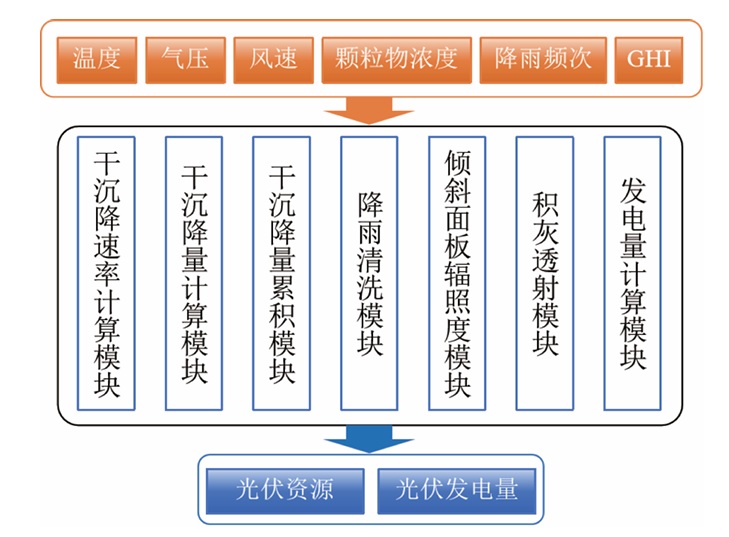随着光伏发电在全球能源转型中的重要性日益增加,颗粒物的干沉降对光伏系统的影响逐渐成为研究热点。本文从颗
粒物沉降至光伏面板导致发电效率衰减的角度出发,研究了粗颗粒物(PM10 )干沉降对光伏资源,特别是对光伏面板辐照量的影响。通过建立光伏资源评估综合模型,系统考虑颗粒物干沉降量、气象因素及积尘密度等对光伏面板辐照量与发电量的影响。研究结果表明,PM10沉降在光伏面板表面形成的积尘层,显著降低了面板的透光率,导致全国可利用光伏资源平均降低约10%。尤其是中国北方地区,较高的PM10沉降导致约600 kWh/m2的辐照量减少,而中部和南部地区受降雨清洗影响,辐照量损失较小,约为100 kWh/m²。季节变化上,冬春季降幅比例高于夏秋季。尽管2020年的干沉降通量少,但因受降雨清洗较少的影响,可利用发电量低于2018年。因此,改善空气质量和加强面板清洁可显著提高光伏发电效率。该成果为光伏的资源评估和发电策略优化提供了理论依据,对推进国家“双碳”目标实现具有重要实践价值。
As the importance of photovoltaic (PV) power generation in global energy transition increases, the impact of particulate matter
(PM) dry deposition on PV systems has garnered growing attentions. This study investigates the effect of coarse particulate matter (PM10) dry
deposition on photovoltaic resources, particularly its influence on the irradiation received by PV panels, which subsequently affects energy
generation efficiency. A comprehensive PV resource assessment model was developed, incorporating factors such as particulate deposition
rate, meteorological conditions, and dust accumulation density to evaluate their impact on irradiation and power generation. The results
show that PM10 deposition forms a dust layer on the surface of PV panels, significantly reducing their transmittance. This leads to an average
reduction of about 10% in available solar energy resources nationwide. Notably, in northern China, higher PM10 deposition causes a reduction
in irradiation of approximately 600 kWh/m2, while in central and southern regions, the impact is less severe, with irradiation loss around 100
kWh/m2 due to the cleaning effect of rainfall. Seasonally, the reduction ratio is higher in winter and spring compared to summer and autumn.
A comparison of results from 2018 and 2020 shows that, despite a decrease in dry deposition flux in the latter year, the reduced rainfall
cleaning effect results in lower usable energy generation in 2020 compared to 2018. In conclusion, improving air quality and enhancing panel
cleaning can significantly boost PV power generation efficiency. The findings of this study are crucial for future PV resource assessments,
optimizing PV power generation strategies, and supporting the achievement of national carbon neutrality goals




